by Elisa Zied | Oct 18, 2020 | books, writer, writers, writing
“This collection of poems and photos beautifully illustrates the complex emotions of living in New York during a global pandemic.” ~ Kelly Ripa, Entrepreneur, Host, Actress and Producer
Living in New York City during a global pandemic has been some combination of surreal, dispiriting, challenging and inspirational. While many of us have yet to fully process and make sense of what has transpired on our usually vibrant streets and in our parks over these last several months—especially in its early epicenter days—several artists have continued to create.
Nicole Freezer Rubens, a native New Yorker, owner of a boutique design firm, and mother of three, is one such artist. Through her dual passions—poetry and photography—she has beautifully and poignantly chronicled her personal experience during the pandemic and shown its impact on our beloved city in her gorgeous debut, “The Long Pause and The Short Breath” (Three Tomatoes Publishing, 2020).
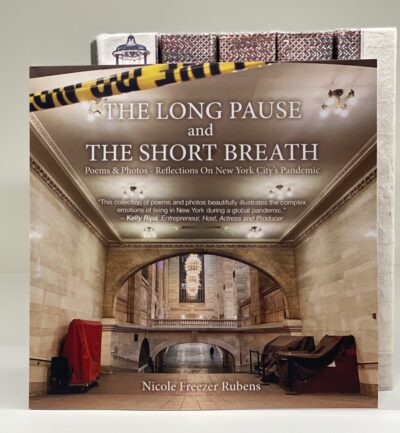 I had the pleasure of doing an Q & A with Nicole about her new book, one that gives readers a highly personal tour of the city during a moving and unforgettable time.
I had the pleasure of doing an Q & A with Nicole about her new book, one that gives readers a highly personal tour of the city during a moving and unforgettable time.
EZ: I’ve been enjoying your vibrant and gorgeous Instagram photos for years. What was it about the pandemic that made you take the plunge— not only to create a book of photos, but one that includes poetry too?
NFR: I have been writing poetry since I was 9 years old. Right after I read Shel Silverstein’s Where the Sidewalk Ends, I set out to create my first book of rhyming poems, bound in a denim blue loose leaf and including images and drawings. In college and after I studied poetry writing as well and throughout my life I have always written for myself. When the world shifted at the beginning of the global pandemic I was quite relieved that we were allowed to walk outside for exercise. Seeing our city empty out inspired me to write, often as I was walking in Central Park. With little else to do, I walked and explored a lot as a means to investigate and process what was happening. The poems began to accumulate after a few weeks. Not only did writing become therapeutic for me, but I began to feel a responsibility to myself to chronicle the events and repercussions of Covid-19 as a diaristic record for the future.
EZ: What was your process in taking and choosing photos specifically for the book, and how did you tackle the poetry (and do the photos pair with the poems or did you see them as separate if not related entities)?
NFR: I am generally a little obsessed with Instagram and love taking photos on my phone everywhere I go. Exploring new neighborhoods and photographing them is absolutely one of my favorite pastimes. When Covid prevented me from doing that, I began to take long walks to relatively local neighborhoods I had overlooked before. You ask an interesting question Elisa. The photos and poems were created as completely separate entities for me. Although they evolved simultaneously, I did not think to use them together until I realized that the poetry I had accumulated, was
becoming a body of work that could be a book. Once I finished writing I sat down to pair the poems with photos. This flowed naturally since they were captured to record the same subject matter of our city under lockdown.
EZ: So many writers and other artists have thrived during the pandemic, but many have also struggled (present company included). Did putting the book together help you cope and stay motivated during such tough times, or was it a struggle (or something in between)?
NFR: I have always had an easier time writing from the lows than from the highs. I have constantly used poetry writing as a coping mechanism. I realize as I write this, that that first binder of poems I wrote at nine, was written right after my parents got divorced. I am lucky because writing is a hobby, so I did not have the pressure to produce as so many artists do. I can say that on the days that I wrote a poem, I felt the satisfaction of productivity and that was personally rewarding and pushed me to continue to write. My interior design work was on hold for six months. My three grown children were home for three months, and cooking and cleaning occupied my days but did not satisfy me. I am very grateful that I was able to use some of my time on pause to create something long-lasting and that is important to me. It was not a struggle at all, it was more of a blessing for which I am grateful.
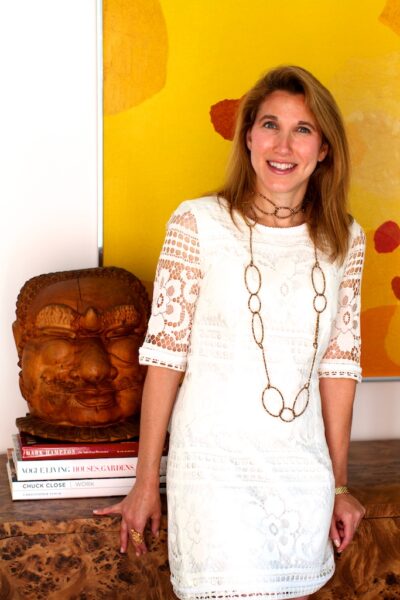 EZ: How would you sum up what you’ve experienced living in New York City during the pandemic, and what are some of the images or poems from the book that best encapsulate or capture the pandemic for you?
EZ: How would you sum up what you’ve experienced living in New York City during the pandemic, and what are some of the images or poems from the book that best encapsulate or capture the pandemic for you?
NFR: Overall, one of the most powerful aspects of being in NYC during the pandemic was bearing witness to the positive side of humanity. The Clap Because We Care round of cheering and applause that happened all over NYC at 7pm daily was always a bright spot in my day. Hearing, seeing and feeling the gratitude for and supporting the tireless healthcare workers and essential workers reminded me of the fundamental goodness in people and amplified my love for my city. Being able to scream for those two minutes, sandwiched between my family and neighborhood as we clapped, was a personal and helpful release. I also realized early on how fortunate I was in so many ways, including having bonus time together with my family. Although I felt frightened and deeply sad and frustrated, sharing that universal sense of loss with the world over made it easier to cope.
The cover image Off Limits of an empty Grand Central Station and You Are!! which shows a hand drawn heart-shaped message of strength taped to a lamppost truly define the times for me. Selecting a poem might be like picking a favorite child, but I can say that after I wrote March 30, 2020 about the field hospital being erected so unnaturally in Central Park, I felt I was on my way to having the writing soothe me.
EZ: What advice has helped you create in the face of a pandemic or grief or any kind or loss? (Or what advice would you offer to other artists?)
NFR: That is a very personal question, and each individual and creation is a unique situation which is what keeps artwork so interesting to me. I was always taught to write what you know, and the same applies to photography. I believe if one uses her voice, she will create from her truth and then it will certainly be meaningful and authentic.
The Long Pause and The Short Breath is available on Amazon or wherever books are sold. (If you don’t see it at your favorite independent bookstore or on their website, please request it.)
More about Nicole Freezer Rubens: She studied studio art, art history, creative writing and photography. Following a career in the art world, she launched NFR Consulting. Since childhood she’s written poetry and taken photos. Her favorite current pastime is exploring new neighborhoods and posting her treasured finds on Instagram. You can follow Nicole on Instagram at @nfrconsult.
by Elisa Zied | May 3, 2020 | fiction
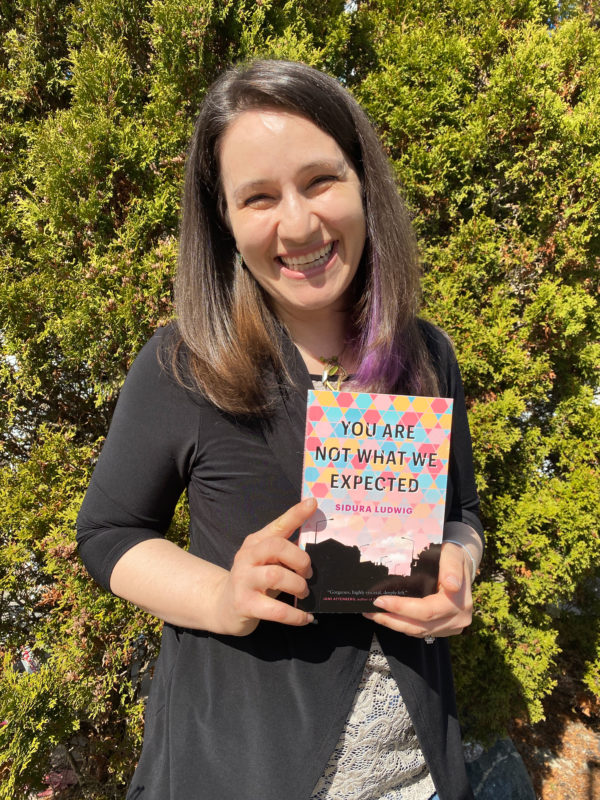 A writer of short stories, novels, picture books, and nonfiction as well as a teacher and communications expert, author Sidura Ludwig is a force. I’ve had the pleasure of getting to know the lovely and talented Ludwig during our journey as candidates for an MFA in writing for children and young adults at Vermont College of Fine Arts in beautiful Montpelier. And I cannot wait to get my hands on and devour my preordered copy of her latest published work, You Are Not What We Expected (Astoria), when it launches on May 5, 2020.
A writer of short stories, novels, picture books, and nonfiction as well as a teacher and communications expert, author Sidura Ludwig is a force. I’ve had the pleasure of getting to know the lovely and talented Ludwig during our journey as candidates for an MFA in writing for children and young adults at Vermont College of Fine Arts in beautiful Montpelier. And I cannot wait to get my hands on and devour my preordered copy of her latest published work, You Are Not What We Expected (Astoria), when it launches on May 5, 2020.
The short story collection is described on Ludwig’s website as follows:
Spanning fifteen years in the lives of a multi-generational family and their neighbours, this remarkable collection draws an intimate portrait of a suburban Jewish community and illuminates the unexpected ways we remain connected during times of change.
When Uncle Isaac moves back from L.A. to the quiet suburb of Thornhill, Ontario, to help his sister, Elaine Levine, care for her suddenly motherless grandchildren, he finds himself embroiled in even more neighbourhood drama than he would like. Meanwhile, a nanny miles from her own family in the Philippines, cares for a young boy who doesn’t fit in at school. A woman in mid-life contends with the task of cleaning out the house in which she grew up, while her teenage son struggles with why his dad moved out. And down the street, a mother and her two daughters prepare for a wedding and transitions they didn’t see coming. This stunningly intimate collection of stories, which spans fifteen years in the lives of the Levine family, is an exquisite portrait of a Jewish community, the secular and religious families who inhabit it, and the tensions that exist there.
I had the pleasure of doing an email Q and A with Ludwig about her latest work and life as a writer–especially during a pandemic! Here are highlights from our exchange:
EZ: When did you first know you were a writer?
SL: I have always wanted to BE a writer and I have always taken my writing seriously. Even as a teenager, I made a point of writing every day, at least two pages. I don’t know if I knew then that I was a writer, but I knew I wanted a writing life. So, I’ve been chasing this label for 44 years! For a while now I have been able to call myself a writer without feeling like I’m an imposter. But I can’t say for sure when that first started.
EZ: What drew you to VCFA to pursue an MFA in writing for children and young adults?
SL: I started taking online courses to challenge myself with my writing. I enrolled in an online Intro to Writing for Children class through the University of Toronto. I just fell in love with the material. It was like a wake-up call. I tried writing picture books for the first time, and I couldn’t get enough of it. Same with YA. The more I wrote, the more I wanted to try. At the same time, I attended the AWP conference in Tampa and made a point of going to all the panels on writing for children. Every panel had at least one representative from VCFA, so I figured I should check this place out. Then I met Ann Cardinal (Director of Student Recruitment). And no one can say no to Ann! She suggested I come down to campus for a few days to check it out. I did and I was hooked. I couldn’t wait to become a part of this vibrant, supportive writing community.
EZ: Your new short story collection, You Are Not What We Expected, is likely to resonate with so many—especially as many of us are hunkered down during this pandemic. What inspired you to write this specific collection of stories, and what do you think those who grapple with the meaning and impact of this time of immense change—being sheltered-in-place alone or with family—can glean from the book? What are its key takeaways?
SL: This book started out as a novel, but it wasn’t going anywhere. I had something like 300 pages of rambling nothing. At the time my youngest child was two years old. I suddenly realized if I didn’t have the energy or attention span to read a novel, how did I think I could write one? I shifted to short stories because they are my first love, and I need the satisfaction of starting and finishing what I was saying. I used the same characters from the novel but explored their journeys through short fiction. I then expanded as I wondered about their neighbours and the other people interacting with them. So that’s how the collection came to be.
In terms of what people can glean from this book at this time…this is a book about family and about looking inwards. What’s happening within the homes in a close-knit suburban community. It’s also about characters who each find themselves at a place they didn’t expect to be. But they move forward regardless. I hope that resonates with readers right now. Because really, none of us expected to be here in a pandemic!
EZ: How was the experience writing this work different from writing your debut novel, Holding My Breath?
SL: Just the other day I realized that these two books mirror each other: Holding My Breath started out as a collection of short stories and then became a novel; and this one started out as a novel and then became a collection of short stories!
The experience of writing this book was totally different because I’m in a completely different place in my life. I have three kids and I write full-time. My first book I wrote while living overseas before we had any children. I wrote it over three years of Sundays while I worked full-time in communications. I suppose in both cases I had to make a point of carving out writing time and being strict about getting my butt in the chair, no excuses. Butt in the chair is really key for me. I may not know what I’m going to write, but I’m halfway there if I sit down when I say I’m going to sit down, instead of waiting to feel inspired.
EZ: How has your writing life changed since the pandemic, both in terms of practice and your ability to focus?
SL: SO MUCH!! Oh, where do I start? First, I’m used to having the house to myself during the day while I work. Now everyone is home (three kids and a husband) and there’s just so much activity. And expectation. I’ll try to write an email and I’ll get interrupted seven times. Mostly, I miss having the time and space to be alone with my thoughts. I’ve taken to waking up early so that I can have at least an hour when everyone else is still sleeping. I journal. Stare out the window. Drink a cup of tea. I just need some quiet time to settle myself.
The other major change is having to administer my youngest child’s distance learning. His school has been amazing at adapting to using Zoom, etc. But he’s only in Grade 2 and he’s not yet an independent learner. That means I’m his teacher once the Zoom meetings end. I’m not good at multi-tasking. So, when I have one ear on his work, it’s not like I can be writing away. We’ve worked it out that my husband takes over from 3 to 6pm and looks after supper time. At least I can get a chunk of concentrated work time each day, even if it’s not as much as I had before.
EZ: Where do you typically like to write, and what are must-haves in your workspace?
SL: I have a writing office in our bedroom. There’s an L-shaped desk with a standing desk, a kneeling chair (for when I want to sit) and then—my favourite—a bean bag chair. A few years ago, I rearranged my office so that I could have a more dynamic working space and I wasn’t sitting so much. This set up is much better for my back and hips.
In terms of what I need: a journal, a good flowing pen (preferably blue), a cup of tea and a full water bottle. My dog, Ella, usually joins me. She’s the only one who can be in the room and not distract me. Of course, she’s mostly sleeping on the floor…
EZ: Given the uncertainties of in-person book promotion, how can readers learn from and support your work and that of other writers until in-person appearances are possible?
SL: I’m making a point of buying books that are launching right now. It’s really hard for writers to not be able to book in-person events. So, buying their books now is even more important than ever in terms of supporting writers. I’m trying hard to connect with my audience through social media. Following up-and-coming writers on social media is also a great way of showing support. Writers, like everyone else, are having to be creative in terms of how they get their work out there during this time. I’m hosting a weekly Thursday night challah bake on Facebook Live called Kneading and Reading. I walk people through how to make and braid challah, and I read a short passage from my book. I take questions. It’s a lot of fun and it feels like an authentic way for me to put myself out there.
EZ: What are your post-graduation writing plans? (What are you working on?)
SL: You mean I have to graduate?
I’m just finishing my third semester and then I’m taking a semester off to focus on book promotion. So, I’m still a year away from post-graduation writing plans. When I do graduate, I hope to have a body of work that I’m excited about so I’ll be motivated to keep revising until I feel I’ve said what I need to.
EZ: Any advice for new/aspiring writers?
SL: Just get your butt in the chair every day. Even if you stare at the wall while your journal and pen lie on the table in front of you. Getting into a writing routine is key if you want to live a writing life. Treat your writing self seriously. Even if you find it hard to call yourself a writer right now, act like one by always making time for your writing. The inspiration will follow.
EZ: Where can people find and support your work?
SL: Anywhere books are sold! I love independent bookstores, so please consider ordering from your local bookseller. If you don’t have a local bookseller, you can find my book on Amazon or any other online bookselling platform.
Visit Sidura’s website here. You can also find her on Twitter at @SiduraLudwig, and on Facebook. (And don’t forget: you can also bake challah with her as she reads from her work on Facebook Live on Thursdays.)
by Elisa Zied | Apr 27, 2019 | books, fiction, writers, young adult books
When I heard about J.B. Howard’s debut novel, When I Was Summer (Viking Books for Young Readers, April 30, 2019) and saw the absolutely gorgeous book cover, I began counting the days until it would be in my hands. Intrigued by the promise of music and mystery (maybe some mating too?!), I pre-ordered the novel and anxiously await its arrival. If it turns out to be anything at all like its author–because what work of fiction doesn’t include at least part of the soul from which it comes–I can’t imagine it’ll be anything less than awesome.
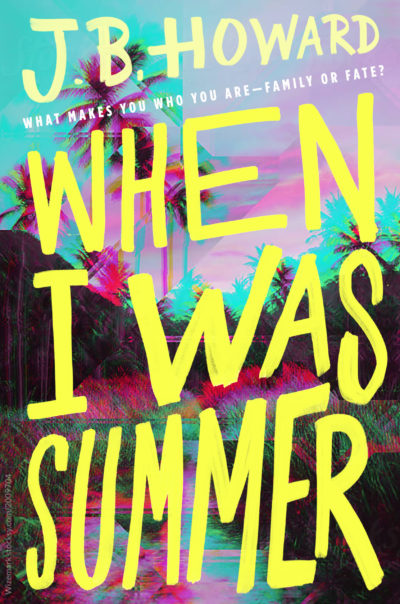 Here’s a description of When I Was Summer from the publisher:
Here’s a description of When I Was Summer from the publisher:
A relatable novel about unrequited love, rock ‘n’ roll, and what you find when you go searching for yourself.
Sixteen-year-old Nora Wakelin has always felt like an outsider in her own family. Her parents and older sister love her, but they don’t understand anything about her: not her passion for music, not her all-encompassing crush on her bandmate Daniel (who is very much unavailable), not her recklessness and impulsiveness. Nora has always imagined that her biological mother might somehow provide the answer as to why she feels like such an outsider.
(more…)
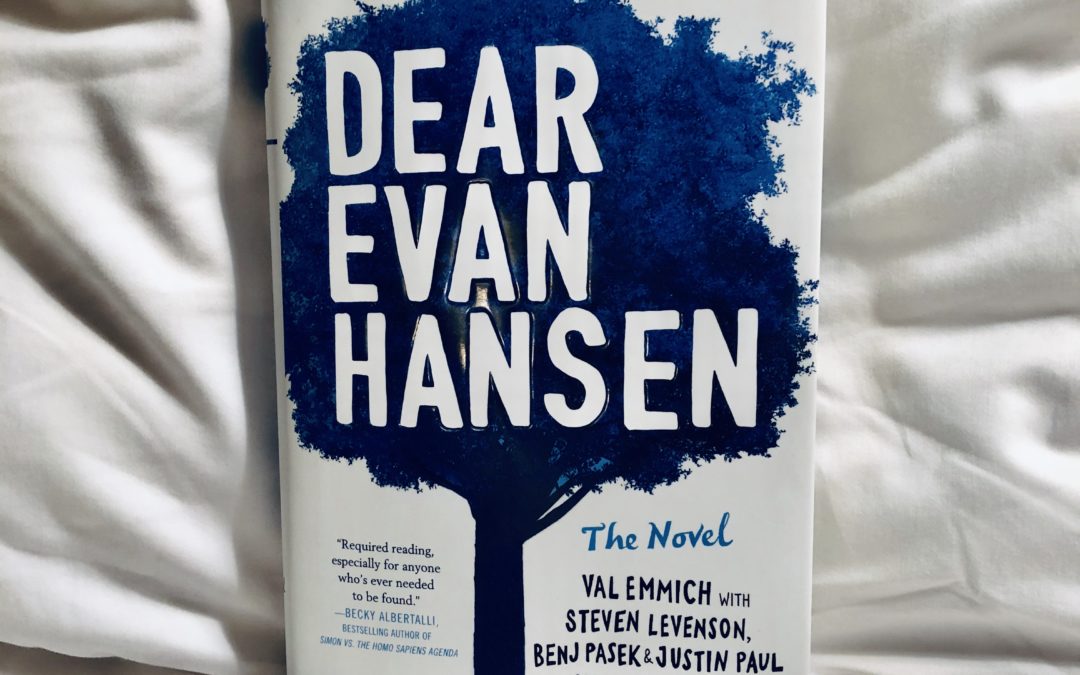
by Elisa Zied | Oct 25, 2018 | books, fiction
When I heard that my all-time favorite Broadway musical*, Dear Evan Hansen, was going to be made into a young adult novel, my heart swelled. Not only do I love reading YA books, but I’m working on two of my own as I pursue an MFA in Writing for Children and Young Adults at Vermont College of Fine Arts. I was excited for us DEH fans to have a different way to enjoy the overwhelming and satisfying experience that is Dear Evan Hansen. But mostly, I was excited for this novel way (see what I did?!) to share the story with teens and adults who may not get to see the show in person. The book (along with the soundtrack) are truly excellent surrogates that can be enjoyed again and again.
Despite the daunting task of turning a brilliant Tony- and Grammy award-winning musical into a YA book, Val Emmich—with book writer extraordinaire, Steven Levenson, and the dynamic, Oscar-winning duo, Benj Pasek and Justin Paul—did it. The book is wonderful. It’s moving. It touches your heart. I was admittedly very nervous to read it, because how could it measure up to the Broadway musical? But any fears I had about the novel not being able to capture the magic of the stage production disappeared in an instant. Like the show, the novel made me laugh and cry. And, like the show, it’s one I will be sure to visit again.
After fan-girling over Emmich, Levinson, Pasek and Paul at both BookCon last spring and at the Dear Evan Hansen: the Novel book launch this month (see photos below), I had the pleasure of doing an email Q & A with the multi-talented Emmich.
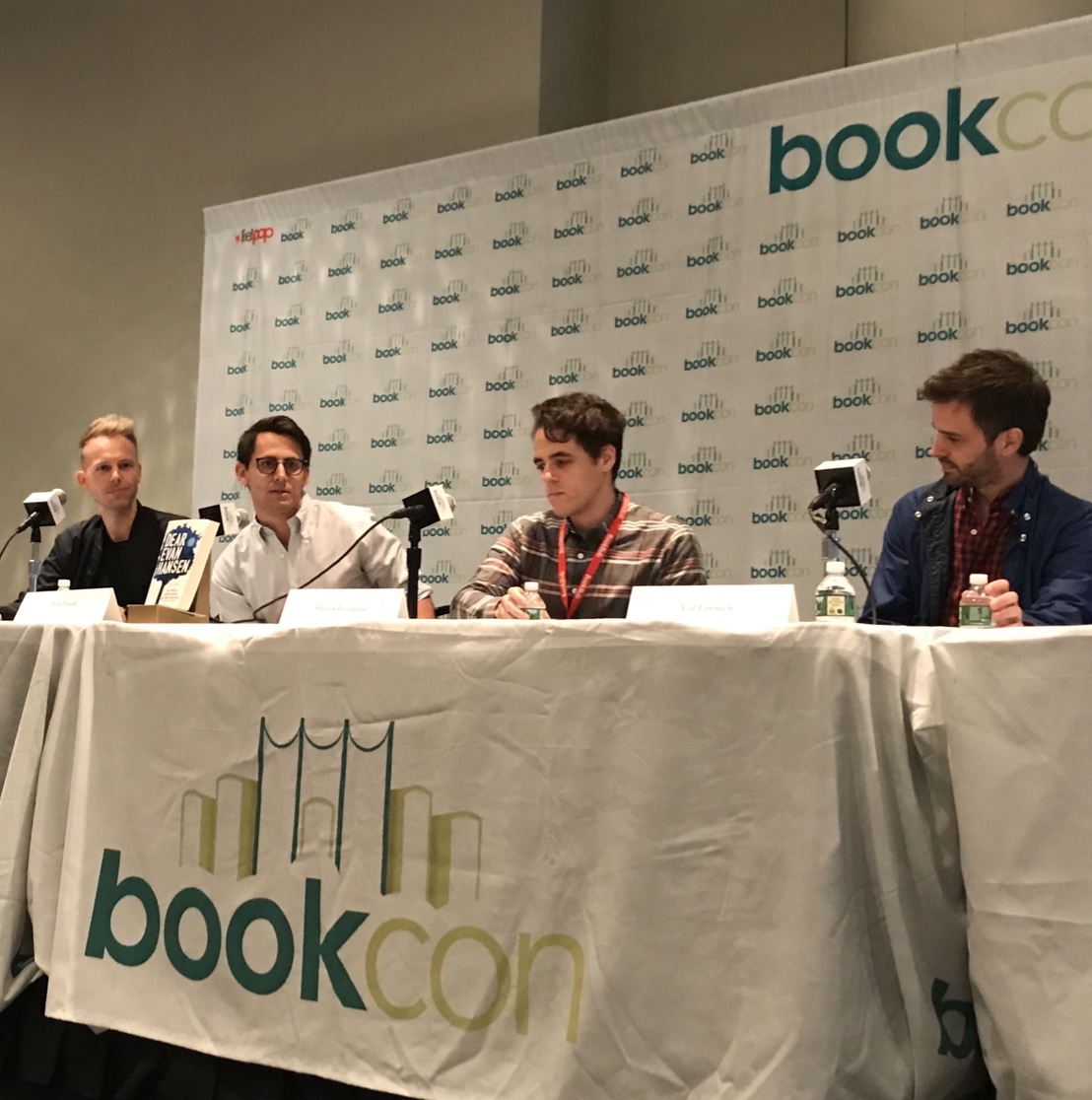
At BookCon 2018. From left to right: Justin Paul, Benj Pasek, Steven Levenson & Val Emmich.
(more…)
by Elisa Zied | Oct 23, 2018 | books, fiction
At the most recent BookCon in New York City, I had the pleasure of sitting next to Heather Frimmer (and her adorable, precocious son, Jonah) at the Dear Evan Hansen The Novel book panel.
Any fans of Dear Evan Hansen–the musical OR novel–are friends of mine!
Besides fanning over Pasek & Paul, Steven Levenson and Val Emmich, we spoke about respective writing journeys. A radiologist by day, and writer whenever she can fit it into her busy family life, Frimmer could not be more excited for the birth of her debut novel, Bedside Manners (SparkPress, October 2018). Here’s a description:
As Joyce Novak’s daughter, Marnie, completes medical school and looks ahead to a surgical internship, her wedding, and a future filled with promise, a breast cancer diagnosis throws Joyce’s own future into doubt. Always the caregiver, Joyce feels uncomfortable in the patient role, especially with her husband and daughter. As she progresses through a daunting treatment regimen including a biopsy, lumpectomy, and radiation, she distracts herself by planning Marnie’s wedding.
When the sudden death of a young heroin addict in Marnie’s care forces Marnie to come face-to-face with mortality and her professional inadequacies, she also realizes she must strike a new balance between her identity as a doctor and her role as a supportive daughter. At the same time, she struggles with the stark differences between her fiancé’s family background and her own and comes to understand the importance of being with someone who shares her values and experiences.
Amid this profound soul-searching, both Joyce and Marnie’s futures change in ways they never would have expected.
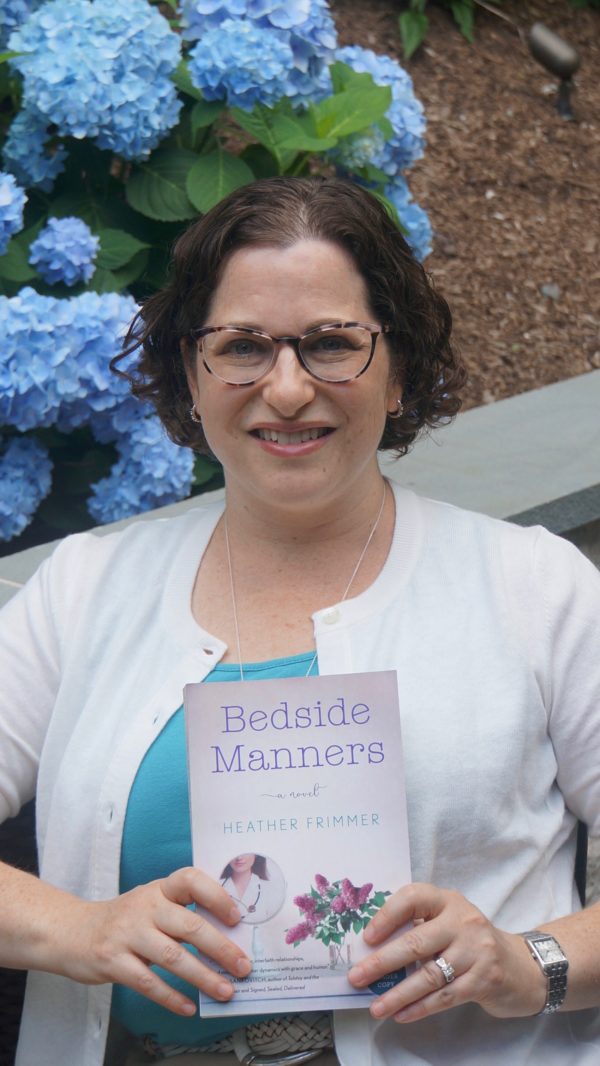 Here’s a Q & A with Frimmer about her book and writing life:
Here’s a Q & A with Frimmer about her book and writing life:
How does it feel to be a debut novelist and published author?
It’s exhilarating and exciting, but at the same time I still can’t believe it’s happening. The fact that people I don’t know are holding my book in their hands and reading my words is hard to believe and a bit scary. I am proud of my accomplishment and completely hooked on writing fiction. Also, the community of women’s fiction authors and book bloggers has been so welcoming and supportive. With social media, I feel the love for my book even while sitting at home at my writing desk.
When did you first have an inkling to write a book? And was this book the result of that first spark/idea?
To exercise the right side of my brain, I signed up for an introductory writing class at Westport Writers’ Workshop. On the last day of class, my instructor asked me to come up with writing goals. When I said I planned to write a few short stories, she asked if I could write a novel. I promptly informed her she was crazy, but I couldn’t get her suggestion out of my mind. Being a driven, type-A personality, I immediately started writing what would become Bedside Manners. I joined a writing workshop class which definitely helped me see the novel to completion.
I also have to give credit to my husband, Ben. With his characteristic humor, he suggested “colostomy” as the first word of my novel. That silly suggestion got me going and a colostomy bag still makes an appearance in the first chapter!
Did you have a formal writing process or some kind of schedule you followed to get it done?
I wrote whenever I had time—sometimes after work or on weekend mornings, but most of my writing happened on Wednesdays, my day off. I didn’t typically set a word count or particular goal. I just wrote the part of the story that flowed at the moment. I tried to end my writing sessions with a small part of the next chapter done to make it easier to pick up the next time. Sharing four pages with my writing workshop every week also kept me on task.
How do you balance your day job with writing time?
It’s not easy. I work full time as a radiologist and spend a large portion of my day in a dark room staring at mammograms, x-rays and CT scans. When I’m not at work, I try to write, edit, read, spend time with my family, take care of errands, and sleep. It’s a constant struggle and one or all of these things often goes by the wayside despite my best efforts.
What’s are you reading now, and what’s in your to-be-read pile?
In the past few years since I began my publication journey, I’ve been reading books by female authors almost exclusively. I am currently reading The Book of Essie by Meghan MacLean Weir, a fellow physician writer. The writing is wonderful and the story is completely unique and fascinating.
Because I also write book reviews for Books INK and for my blog, my TBR pile is always sky high. I am also a sucker for e-book deals and a dedicated library patron. Suffice it to say that I have more books than I could ever read. Up next, I would like to read Unbroken Threads by Jennifer Klepper, a novel about an attorney who represents a Syrian woman seeking asylum. The Cast by Amy Blumenfeld, and advanced copies of The Rain Watcher by Tatiana de Rosnay and Forget You Know Me by Jessica Strawser are also up soon. A hopeless book addict, I could go on forever about what I’ve read and want to read.
Where do you most like to write?
I created a beautiful writing and reading nook in my family room which I rarely use because it’s too quiet. A bit of activity and background noise actually helps me focus. I wrote most of Bedside Manners at the Barnes and Noble café in Westport, CT powered by a large iced coffee, my other addiction.
Do you have any advice for other writers who want to write a book?
Cast away the self-doubt and don’t fall prey to impostor syndrome. If you have an idea and the perseverance to sit down and put in the work, you can write a book. Expect it to be difficult and frustrating, but the work will ultimately pay off in so many ways. Becoming a writer has added amazing depth and richness to my life and I cherish the people I’ve met along the way.
To learn more about Heather Frimmer and Bedside Manners, visit her website. (And here’s a recent AP article about her journey, and a piece on her recent book launch at Barnes and Noble in Westport, CT.)
 I had the pleasure of doing an Q & A with Nicole about her new book, one that gives readers a highly personal tour of the city during a moving and unforgettable time.
I had the pleasure of doing an Q & A with Nicole about her new book, one that gives readers a highly personal tour of the city during a moving and unforgettable time. EZ: How would you sum up what you’ve experienced living in New York City during the pandemic, and what are some of the images or poems from the book that best encapsulate or capture the pandemic for you?
EZ: How would you sum up what you’ve experienced living in New York City during the pandemic, and what are some of the images or poems from the book that best encapsulate or capture the pandemic for you? A writer of short stories, novels, picture books, and nonfiction as well as a teacher and communications expert, author Sidura Ludwig is a force. I’ve had the pleasure of getting to know the lovely and talented Ludwig during our journey as candidates for an MFA in writing for children and young adults at
A writer of short stories, novels, picture books, and nonfiction as well as a teacher and communications expert, author Sidura Ludwig is a force. I’ve had the pleasure of getting to know the lovely and talented Ludwig during our journey as candidates for an MFA in writing for children and young adults at  Here’s a description of When I Was Summer from
Here’s a description of When I Was Summer from 

 Here’s a Q & A with Frimmer about her book and writing life:
Here’s a Q & A with Frimmer about her book and writing life:
Recent Comments